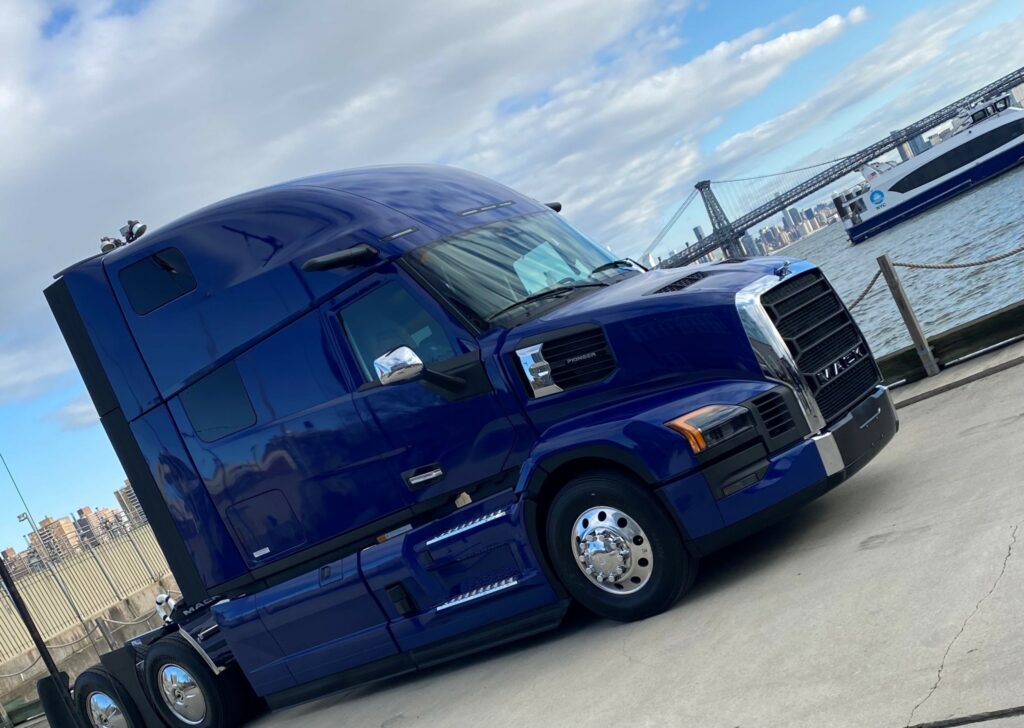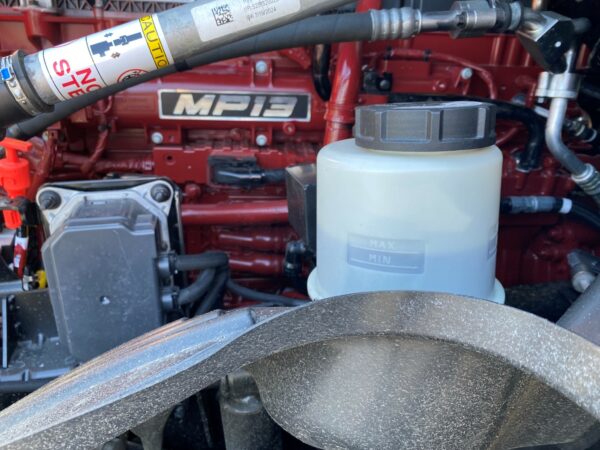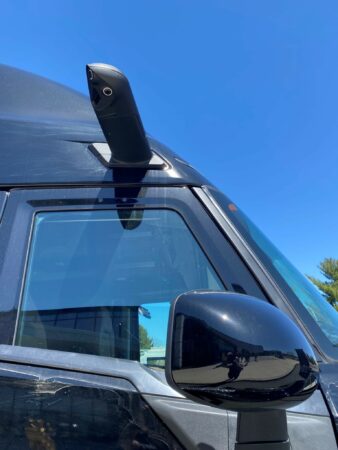Mack has unveiled an all-new highway tractor it says improves fuel economy by 11%. It also promises to greatly improve driver comfort, which executives hope will motivate driver-focused fleets to place orders, giving Mack a greater presence in the on-highway segment.
The company’s glitzy launch event in Brooklyn, N.Y., coincided with the brand’s birth 125 years ago in the same city. And while the truck’s design team incorporated historic styling – a keen eye may notice the front end resembles the Brookly Bridge that Mack trucks were instrumental in strengthening – the truck itself is ultra-modern, loaded with tech, and features an automotive-inspired design.
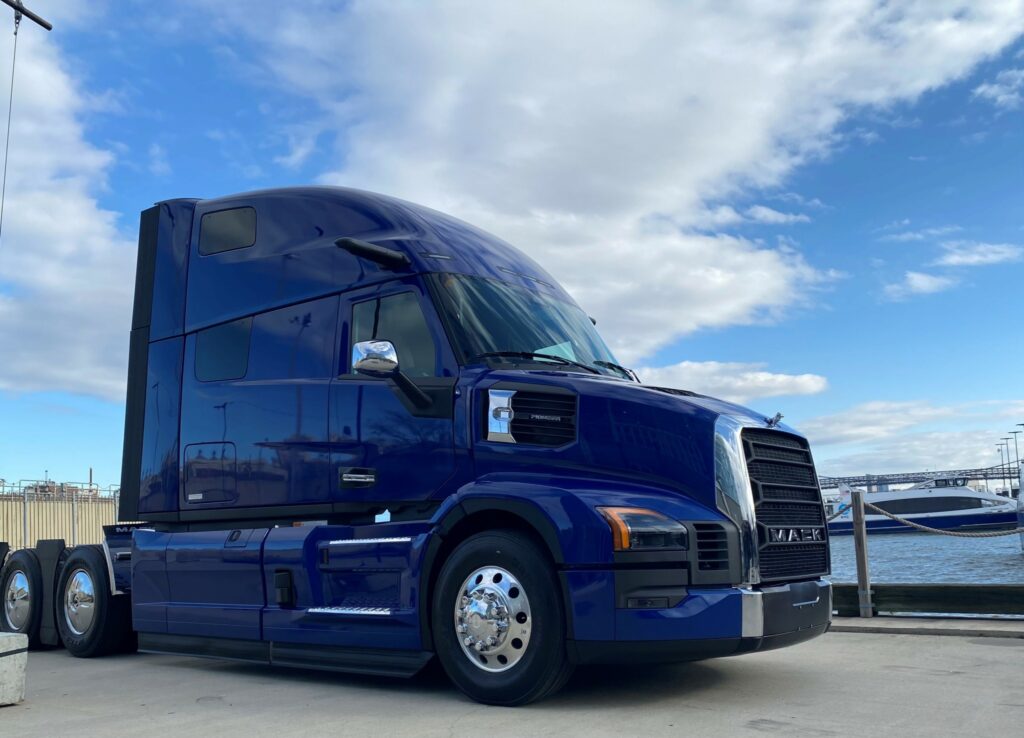
The truck was eight years in the making. If you’re keeping score, it was already in the works when the Mack Anthem highway tractor was released in 2017. While the Anthem found a following in the day cab segment and served longhaul on-highway customers well, the Pioneer is an altogether different machine.
The truck is 90% new, including a new body-and-white, while Anthem was built on the long-running Pinnacle platform.
“An all-new body-and-white is a dream come true for a designer,” said Vince Lokers, Mack Trucks specialist and chief designer, responsible for interior design.
Lukas Yates, expert chief designer responsible for the exterior design, said the truck’s wedge-shaped cab flares out to afford an extra eight inches of space at the shoulder level of a seated driver. This has allowed the company to add second armrests to the seat for greater driver comfort.
And that’s important, because Mack expects the success of the Pioneer to stem from driver demand.
“We want drivers to be bugging their fleet managers, saying ‘I want a Mack’,” said Fernando Couceiro, vice-president and product owner for Mack Trucks on-highway. “When we get that feedback and customers who are not considering a Mack today for linehaul applications are really getting to know the truck and ultimately ordering it.”
He was responding to a question on what would make the Pioneer a success.
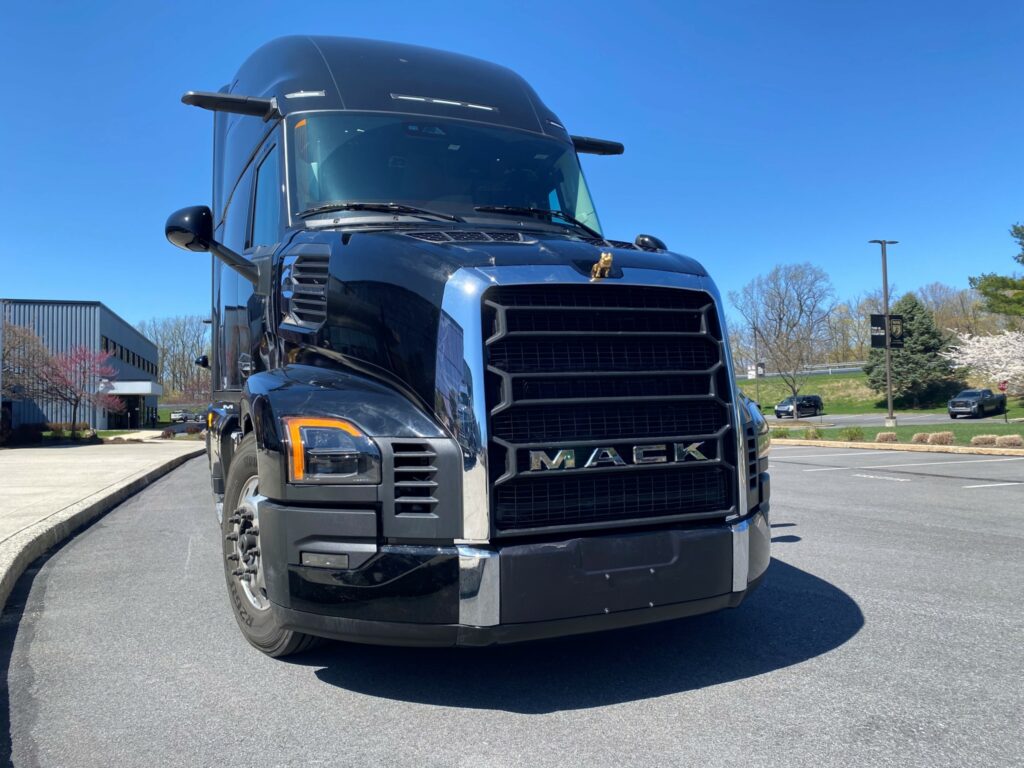
Refined attitude
Mack has long been a dominant player in the vocational segment, and designers feel this is the truck that will give it a major breakthrough in the on-highway market.
“We wanted to refine the attitude,” Yates said of the design. “This project really set the stage.”
The truck was dubbed internally as the M1-Aero while in development. And attention to aerodynamics can be seen throughout. Even the placement of the nameplate – on the lower of the three grille bars – was placed where it would provide less disruption to airflow into that grille. Vents on both the top and sides of the hood direct air to where it’s needed to cool the engine and transmission.

But that need for efficiency was balanced with a strong desire to create a truck that looks like none other.
“We started with themes,” Yates said. “What would give us the best Mack for the highway and the most distinct truck coming down the road? We want the public to see the Mack as a confident, strong truck as it’s going down the highway. So, the front view is very dominant.”
Yates described the shape as “imposing” and structural. During the design process, it sketched out the Pioneer with various customer liveries to get as realistic a preview as possible. A clay model was designed and then brought to focus groups with actual drivers, who weren’t told it was a Mack project. Some of their suggestions made it into the truck.
Lokers said an electronic logging device (ELD) plate is one such example. Drivers or fleet owners can mount the ELD to the plate with cable pass-throughs and then swing it out of the way when it’s not needed.
Other ideas were carried over from the Anthem, such as an accessory rail with a cord management system to reduce clutter and maintain a clean dash.
Being an all-new truck, Mack also reconfigured its Lehigh Valley, Penn., plant, bringing in efficiencies that all models will benefit from and that allow the truck maker to produce more trucks per day.
It also re-evaluated all its suppliers, expanding its scope of considerations to existing automotive suppliers. Couceiro said a revamped supply base allowed Mack to reach the “highest quality standard available” while also eliminating worries about future capacity constraints.
But while the interior of the Pioneer is heavily automotive-inspired, designers were also mindful to maintain the brand’s heavy truck image. It is a Mack Truck, after all. Durability. Ruggedness. Boldness. A gloved hand can grasp the door handle.
Bezel surrounds protect the paint, and the steps were configured to give the maximum possible foot space for improved ingress and egress, while also discouraging buildup of snow or ice. The headlamps come standard with defrosting and de-icing capabilities without any wires within the lens that can inhibit lighting performance. Optional corner lamps improve visibility while cornering at night.
Yates said they Mack “tried to wring out every bit of personality with every surface.”
The Pioneer, in the spirit of its name, also pays homage to the brand’s history. The low fenders and strong stance are a throwback to the R Model. The Bulldog mounted on the hood was, of course, retained, but it’s now slightly sunken rather than mounted on a pedestal. Believe it or not, even the Bulldog had an effect on aero.

On the track
Following the truck’s reveal, CDL-equipped editors were taken to the Mack Experience Centre in Allentown, Penn., where we had a chance to drive the Pioneer. It’s here that the attention to detail could be truly appreciated.
The interior space is cleverly configured for ample storage and charging stations. Every touchpoint was designed with purpose. Switches and buttons have a sturdy feel. Despite the automotive styling, this is a truck after all.
The additional space is noticeable compared to the Anthem. The seats are higher quality. The truck I drove was adorned with a gold Bulldog on the hood, which denotes an integrated powertrain as well as the top-end Elite interior package.
The truck is also loaded with tech, including an optional digital mirror system (DMS) that improves visibility and allows the fleet to remove the West Coast mirrors to improve fuel economy.
Altogether, Mack says the Pioneer is 11% more fuel efficient than the Anthem, due to a combination of powertrain enhancements and improved aerodynamics. The DMS contributes a full percentage point to the fuel economy improvement, saving the average fleet $500 a year. Those digital mirrors can be supplemented with 50 sq.-in. hood-mounted mirrors.
The grab handles have been moved inside the cab, improving ingress and egress and also creating a smoother side for better air flow.
The biggest differentiator is the view from the driver’s seat. It could be a cabover – you have to lean forward and sit high to see any of the sloped hood. Some may miss seeing the Bulldog hood ornament on its usual perch as they drive down the highway, but the visibility is vastly superior.
The heated windshield is curved to enhance visibility further. The hood opens with a latch, much like your passenger car. A pre-trip assistant cycles through the lights to ease – and encourage — pre-trip inspections.
Another great upgrade is the electronic parking release buttons. The brakes are automatically applied when the driver takes off their seatbelt. They are automatically released when the driver fastens their seatbelt and applies the throttle.
Mack retained the flat-bottom steering wheel it introduced in the Anthem, as it got rave reviews from drivers. It also made various ledges structural so a heavy driver can use them to hoist themselves out of the seat.
Couceiro boldly proclaimed that Pioneer is the most fuel-efficient truck in the North American linehaul segment. Maybe even the world, he added, when you consider conventional trucks outperform the cabovers found in other global markets.
Even the openings in the mesh grille have been expanded to get sufficient cooling to the engine without compromising aerodynamics. Mack has rebranded the 13-liter engine as the MP13.
Software updates to the mDrive automated manual transmission have given it 30% faster shifting capabilities and improved fuel efficiency.
Drivers will also like the 12-inch instrument cluster and 9-inch secondary display. Oh, and there’s a spot for a 1-liter water bottle in the door pocket. Heck, even the key fob was improved. How’s that for attention to detail?
The transmission controls have been placed on a steering column-mounted stalk, and the steering wheel itself is loaded with the most commonly used buttons.
Various sleeper sizes are available, from H2 to H4, mid-roof to high-roof. An optional Flex Suite can be quickly converted from bunk to dinette table and two seats. Lokers stands 6’5” and can stand up in even the H2 sleeper.
Mack is taking orders for the Pioneer immediately, with serial production to begin in the third quarter.
